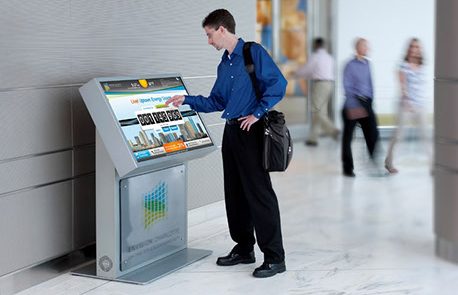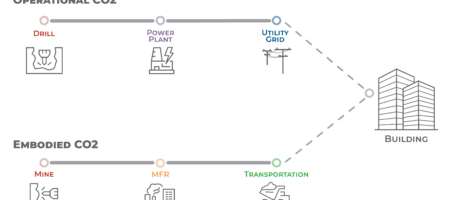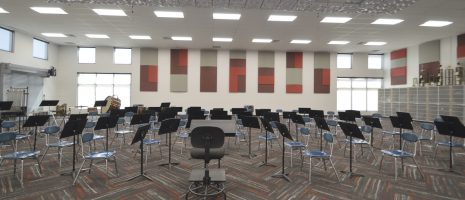5 ways to harness the energy saving power of your employees

Purchasing Energy-Star appliances, reducing the number of coffee makers and printers, and even going completely paperless are all great first steps to becoming more energy-efficient and reducing your energy usage, but until employees understand why these changes were made – and more importantly buy into the mindset of why these changes are even necessary – your facility may never reach its energy-saving potential.
A study conducted by the US Department of Energy assessed the behavior of employees and staff and their effect on building energy performance and found that employees’ behavior “significantly impacted the results of proposed energy efficiency initiatives” and another study by the US Environmental Protection Agency found that “occupants contribute to 30% of a building’s energy consumption” (brightpower.com). But many employees may not even realize how their everyday habits contribute to greater energy use. Here are five ways to reach your energy-saving goals:
1. Include them in the planning
When employees at the Iowa Utilities Board and Office of Consumer Advocate (IUB/OCA) moved in to their new net zero ready, LEED Platinum, and Energy Star-rated facility, they had to acclimate to the building’s new sustainable features to achieve the desired energy usage, which was four times less than a similar code-compliant office building. Representatives from each team attended pre-occupancy meetings to strategize, and employees provided feedback about the new space once they moved in. This teamwork provided an outcome that both met the owner’s goal and helped employees become comfortable in their new environment.
2. Educate them on the intent of the building system operations
Since many employees may not realize that there are steps they can take to reduce energy usage, educating them is a simple way to achieve results and greater participation in company-wide energy saving. Phantom loads – energized devices that continue to consume energy even when turned off – are often overlooked and can quickly add up to be major sources of energy depletion. Hidden culprits include computers and printers left on overnight, individual minifridges and coffee makers, and phone chargers not in use. Providing information by word-of-mouth, sending informative emails, and hosting seminars are positive and nonintrusive ways to communicate company goals with employees.
3. Motivate and engage them
In order to get the most employee participation in company-wide energy savings, find ways to motivate staff to become part of the solution. Recognizing individuals who are putting in the effort not only encourages those employees to continue their good habits, it can also reinforce the company’s goals and motivates others to participate. Additionally, if the company goals seem too ambitious or lofty to an individual, they will be less likely to jump all in. Break up your bigger energy-saving goals into smaller increments that can be easily achieved. Once employees have become comfortable with the smaller changes, they’ll be more motivated to participate in the bigger ones.
4. Reward them

© Charlotte Center City Partners
Competitions between teams with incentives can also greatly motivate employees to become active participants in a company plan. Turning energy-saving tasks into a game can engage employees and make it more personal. Quizzes, puzzles, and even scavenger hunts can educate employees and make energy-saving changes seem less daunting. Cash, gift cards, and treats can be tangible rewards to achieving goals.
5. Show them what they’ve accomplished
Providing understandable feedback can show employees how the measures they take work and how much progress is made by their efforts. Interactive energy dashboards help staff visualize trends in relation to the overall goal, giving them a sense of ownership in the company’s energy usage. For example, the National Renewable Energy Laboratory (NREL) Research Support Facility, a LEED Platinum, net zero energy facility in Golden, CO, has systems designed to reduce energy usage that are aided by employee efforts. NREL provides easy-to-read graphics that break down actual and projected energy use and show the amount of energy provided by each energy source for the campus. These illustrations help employees see where their energy is coming from and how much energy NREL hopes to save in the future.
Energy-saving solutions aren’t always achieved by replacing low-efficiency systems, though they are sometimes necessary. A paradigm shift in a person’s thinking and office lifestyle is what will most effectively get employees engaged and excited about company goals and can have a greater impact on your building’s energy-saving potential.
8 steps you can take to reduce energy usage
in the office:
1. Turn off lights and appliances when not using them
2. Put computers to sleep instead of using a screensaver
3. Adjust the temperature on weekends when the building is unoccupied
4. Reduce the number of coffee pots and printers – no personal appliances such as under-desk heaters or coffee cup warmers
5. Purchase energy-efficient appliances with the Energy-Star label
6. Provide employees with laptops instead of desktops because they use less energy
7. Use natural daylight, but install window coverings to prevent overheating
8. Go paperless and use a shared drive instead











